These days, consumers expect a business to deliver a seamless, personalized, and engaging experience that anticipates and meets their needs in all spheres. No longer is acquiring customers as simple as gathering leads and utilizing a one-size-fits-all marketing plan with generic messaging. Marketers are now able to drive optimal sales by employing a strategic combination of video, PPC, SEO, and email, to create a holistic 360-degree approach that meets the audience wherever they are.
Holistic Marketing Plan
A holistic marketing plan addresses a multitude of aspects in the customer journey with your brand through every channel. Most importantly in a holistic marketing approach, any friction is eased that would traditionally hinder a customer from completing their journey with your company. To do so, many companies are now taking advantage of the inbound marketing methodology.
3 Steps for Successful Inbound Marketing
As coined by HubSpot, inbound marketing is a methodology of creating helpful, educational, and informative content designed to build brand awareness and increase sales. Instead of peppering potential customers with unwanted phone calls, emails, or mail from purchased lists, inbound aligns itself with consumers’ needs without unwanted interruption.
Here are the three stages of inbound marketing and the accompanying actions you can take to create content for each step of the journey.
1. Attract Strangers
The goal is to attract visitors to your website or service by creating relevant content including blog posts, videos, infographics, ads, and social media. Your content should focus on answering and solving problems that a visitor has. Customer testimonials and promotions are also great ways to bring in positive attention. Attracting strangers is, by far, one of the most challenging stages of the customer journey. This is mainly due to the oversaturated marketplace and the rush to bring all products and services online.
While quality, engaging content is the goal of this stage, it needs to be done in conjunction with various marketing tactics. Without them, the likelihood of your content gaining traction is slim. By utilizing SEO (search engine optimization), PPC (pay-per-click search engine marketing), and video creation and distribution strategies, businesses can benefit from inbound marketing with valuable interactions along the customer journey.
SEO
Search engine optimization is the process of making your website user-friendly. Don’t create content for search engines. Instead, create content to answer your user’s queries. While doing so, be sure to meet Google’s 3 Core Web Vitals. As explained by Philip Walton on web.dev, these aspects all deal with user experience- loading, interactivity, and visual stability. Here’s what to look for:
Loading: The time it takes for the first image to load is measured by Largest Contentful Paint (LCP): For a good user experience, LCP needs to occur within 2.5 seconds of the page loading.
Interactivity: The length of time it takes someone to interact with the page is measured by First Input Delay (FID): Pages are suggested to have an FID score under 100 milliseconds.
Visual Stability: If elements on the page move around as it loads, the Cumulative Layout Shift (CLS) score will be high. For a good user experience, pages need a continued CLC score of 0.1. or less.
Check your score with PageSpreed Insights. If it isn’t above 75%, your page will not rank among the top-performing websites.
PPC
Pay-per-click strategies supplement and increase organic searches, paying to get in front of website visitors. Since the start of the pandemic lockdown, resistance to internet shopping has declined sharply, with 81% of people searching online for products and services. (Datareportal) This inevitably increased competition, making PPC more necessary than ever. To make the most out of your PPC budget, we suggest implementing negative keywords, ad schedules, and geo-targeting.
Negative keywords: These keywords help exclude irrelevant queries. For example, if you are exclusively selling “adult clothing,” you could exclude searches for “children’s clothing” and “pet clothing.” However, negative keyword implementation is nuanced and requires a deep understanding of the various algorithms search engines use. If you’ve never used them before, feel free to reach out to Forge Apollo. Our passionate team is well educated in SEO and PPC techniques and would love to help.
Ad schedules: To create a winning ad schedule, investigate which ads perform best and when. From there, you can optimize campaigns by only serving ads during the times they are getting clicked. For instance, a hairstylist that largely depends on walk-ins would want their ads to show during business hours.
Geo targets: Where you show an ad can be just as important as when. For example, a window contractor services a specific area, perhaps a 25-mile radius of their office, and nothing outside of that range. Geotargeting should be used to maximize their PPC spend to the full extent. This will allow their ads to be included in areas of service. You can even adjust bids by location so that your spend is prioritizing the areas that make the most sense for ROAS.
Organic results and ranking is incredibly important and can be a good indicator of site health and authority, but don’t overlook the power of PPC. According to Moz, PPC clicks on Google are 50% more likely to make a purchase than through organic search. Now that they’ve found you, it’s up to keep them engaged.
2. Engage Prospects and Customers
During this stage, focus on building sustainable relationships with leads and customers. What is the best way to do this? Customer service. We’re talking chatbots, live customer service lines, email inquiries, website inquiries, and any other lines of customer inquiry or interaction your brand uses. These sources of contact should be personal, quick, and get to the heart of the problem with little to no transfers or hold times.
Response Time
How quickly a business responds to a customer inquiry makes all the difference. So how fast do you need to be? For online communication, most consumers will wait up to 5 minutes before moving on to another company. (Sharpen) For phone calls, a Velaro study found that only 5% of respondents would wait for more than 5 minutes, with a whopping 32.3% saying there should be zero wait time. How does this translate into bounce rates? 34% of people who hang up before reaching an agent don’t ever call back. (TCN)
Chatbots
If the response times scared you a little, consider implementing a chatbot feature. They’re available 24/7 and can be programmed to answer anything from simple navigation to troubleshooting or checkout! Not only does this cut down operation costs, but consumers also don’t mind using them because they answer questions quickly and effectively. In a relatively short amount of time, chatbots have grown so much in popularity that 46% of users prefer bots to humans! (SmallBizGenius)
Benefits of Quick Responses
How quickly you interact with prospects and customers makes a difference: Bain and Company report that “companies that excel at the customer experience drive revenues 4% to 8% higher than those of their market.” So, be sure to erase any friction a consumer may have when communicating with your brand.
3. Delight Customers and Promoters
The customer journey doesn’t end when they purchase. It’s imperative to continue to care for them to encourage repeat purchases. Brand loyalty is worth its weight in gold because increasing repeat customer rates by only 5% increases overall profits by 25% to 95% (Harvard Business Review).
Email Automation
Email marketing is here to stay, so take the time to create dedicated automated email workflows using triggers, personalization, and list segmentation. Putting in the work now will save time and resources in the future. Email also has an impressive ROI of $42 for every $1 spent (Litmus Blog). What types of email automations should you consider? We recommend having a minimum of 3-4 automations: a cart abandonment, NPS (Net Promoter Score) & Review, Welcome, and Upsell series. Each has its unique benefits but all encourage customer interaction.
Smart Content
Smart content is a lifesaver when it comes to personalizing large batches of emails. You should have gathered enough likes, interests, and dislikes to tailor your messages directly to them by this stage. Using smart content, each section of the email can be swapped out to fit those likes. For instance, say you have two customer personas but only want to make and send one email to them. Using lists or lifecycle stages, you can make three (general, persona 1, persona 2) separate email messages within the same email that will automatically show each group upon sending.
Regardless of how you do it, creating a plan for customers and promoters needs to become a crucial part of your marketing plan. They are your best source of new business because they’re the ones leaving reviews and recommending the product or service to their family and friends. One happy customer leads to others.
Having a Hard Time Understanding Your Audience?
Let Forge Apollo focus on creating a flexible and holistic customer journey blueprint through custom PPC, SEO, website, content, and inbound strategy to save your business time, money and generate revenue.







